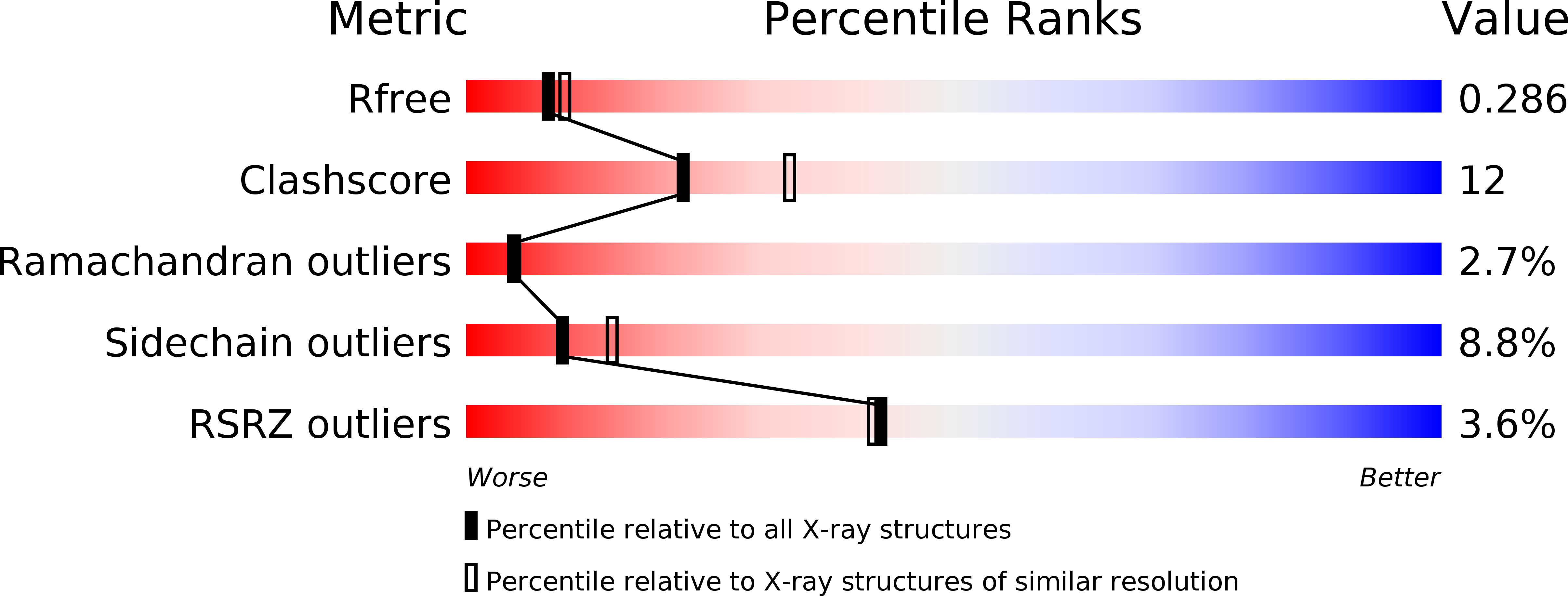Crystal structure of the oxygen-dependent coproporphyrinogen oxidase (Hem13p) of Saccharomyces cerevisiae
Phillips, J.D., Whitby, F.G., Warby, C.A., Labbe, P., Yang, C., Pflugrath, J.W., Ferrara, J.D., Robinson, H., Kushner, J.P., Hill, C.P.(2004) J Biological Chem 279: 38960-38968
- PubMed: 15194705
- DOI: https://doi.org/10.1074/jbc.M406050200
- Primary Citation of Related Structures:
1TK1, 1TKL, 1TLB - PubMed Abstract:
Coproporphyrinogen oxidase (CPO) is an essential enzyme that catalyzes the sixth step of the heme biosynthetic pathway. Unusually for heme biosynthetic enzymes, CPO exists in two evolutionarily and mechanistically distinct families, with eukaryotes and some prokaryotes employing members of the highly conserved oxygen-dependent CPO family. Here, we report the crystal structure of the oxygen-dependent CPO from Saccharomyces cerevisiae (Hem13p), which was determined by optimized sulfur anomalous scattering and refined to a resolution of 2.0 A. The protein adopts a novel structure that is quite different from predicted models and features a central flat seven-stranded anti-parallel sheet that is flanked by helices. The dimeric assembly, which is seen in different crystal forms, is formed by packing of helices and a short isolated strand that forms a beta-ladder with its counterpart in the partner subunit. The deep active-site cleft is lined by conserved residues and has been captured in open and closed conformations in two different crystal forms. A substratesized cavity is completely buried in the closed conformation by the approximately 8-A movement of a helix that forms a lid over the active site. The structure therefore suggests residues that likely play critical roles in catalysis and explains the deleterious effect of many of the mutations associated with the disease hereditary coproporphyria.
Organizational Affiliation:
Department of Medicine, University of Utah School of Medicine, Salt Lake City, Utah 84132, USA.



















